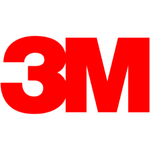Frozen Food Market Synopsis
Frozen Food Market Size Was Valued at USD 304.48 Billion in 2023 and is Projected to Reach USD 510.06 Billion by 2032, Growing at a CAGR of 5.9% From 2024-2032.
Food and beverages which are thoroughly processed, packed, and preserved by freezing following good commercial practices, which are further intended for consumption are called as frozen food.
- Frozen foods are an extremely affordable and convenient way to incorporate nutritious and healthy foods, including fruits & vegetables, protein & dairy, as well as whole grains. Chefs across the globe are highly benefitted from frozen foods as they deliver excellent quality as well as reduce labor and waste.
- Frozen foods contain more minerals and vitamins as fresh foods tend to lose them over a certain time, whereas freezing preserves and retains nutrients. This is one of the major factors that attract maximum consumers to choose frozen food over fresh food. For instance, a survey of 2000 adults by Deloitte found that although consumers may enjoy the consumption of fresh foods, they are aware of the huge food waste, and thus opt for frozen foods owing to their nutritional value as well as extended shelf life. In the firm’s findings, 57% of all 18-34 years old adults stated that frozen vegetables are relatively better than fresh.
- Additionally, the young population is majorly inclined towards frozen food due to the quality & healthfulness it provides, which henceforth drives the market growth.


Frozen Food Market Trend Analysis
Increasing Female Working Population and Demand for Convenience Food
- In recent years, there has been a tremendous increase in the female working population worldwide. As there is a rise in the number of working women, it becomes hard for them to prepare or cook fresh meals daily. Also, the hectic lifestyles and busy working schedules restrict them from consuming a healthy diet and thus the purchase of frozen food meals is increasing rapidly.
- According to the U.S. Department of Labor in 2019, women’s employment rate in the U.S. is 46%, in South Africa, it is 45%, and in China is 43.7%. With the growing female working population, there is a significant increase in the sales of frozen food products, including both raw materials as well as ready-to-cook or ready-to-eat foods. Frozen foods help in save time for preparation, as well as can be carried anywhere, thereby driving the rapid market growth. Additionally, the rising disposable incomes and increasing awareness, and the advent of longer shelf-life goods among the female population also boost the growth. Further, with huge technological innovations in the food industry, the range of convenience food including canned, packaged, frozen, and instant food products, has expanded from frozen, microwave-able, shelf-stable, and others.
- Frozen food thereby holds a large share in this segment. As more female populations are entering the workforce and the lifestyle trends are widely changing, the demand for convenience food is expected to increase rapidly, further propelling the frozen food market growth.
Technological Advancements and Digitalization in the Retail Sector creates an opportunity
- Online grocery shopping as well as the introduction of new apps are growing widely. The growing retail industry is making it convenient and easy for consumers to choose products according to their preferences.
- Consumers are inclined more towards online shopping because of the added features of convenience and variety. With the rapid penetration of internet and smartphone usage, rapid digitalization in the retail sector can create profitable opportunities for the growth of the frozen food market. Major manufacturers and companies can showcase their frozen food products and sell widely with the help of online grocery platforms.
- Additionally, the growing R&D initiatives by key manufacturers & retailers to improve and maintain product quality can be beneficial for market growth. Further, the introduction of new technologies such as high-pressure processing (HPP), is essential in bringing a cost-effective solution and offering lucrative opportunities for the frozen food market.
Frozen Food Market Segment Analysis:
Frozen Food Market Segmented based on type, product.
By Type, the Ready-to-Eat segment is expected to dominate the market during the forecast period
- By Type, the Ready-to-Eat segment is expected to dominate the market growth of frozen food in the forecast period. The huge dominance is due to the hectic lifestyles, and the ease of availability of frozen food meals.
- Additionally, as these foods do not consume any preparation time, and maintain a longer shelf-life, consumers across the world choose such eatables again and again over a while.
- Frozen ready-to-eat meals and breakfasts are healthier food options to simplify lives during stressful routines, and they thus have witnessed a huge demand from the consumer of every age group. Further, the health benefits, easy management of calorie intake, and wide availability of food varieties are estimated to drive the huge growth of this segment.
By Product, Meat and Seafood segment held the largest share in 2022
- By Product, Meat and Seafood Products is the major dominating segment of the frozen food market. The increasing usage of such products by the major food companies such as KFC, Pizza Hut, and McDonald’s acts as a key driver of the growth of the meat and seafood product segment.
- Furthermore, the utilization of meat and seafood products by numerous end users such as hotels, full-service restaurants, resorts, and quick-service restaurants boosts the market growth.
- Additionally, as frozen meat and seafood provides additional benefits as they are free from harmful preservatives, and possess high nutritional value, the segment is expected to attain huge growth. Also, due to the extended shelf life, high-quality meat, and higher food safety, meat, and seafood products dominate the frozen food market.
Frozen Food Market Regional Insights:
North America is Expected to Dominate the Market Over the Forecast period
- North America dominates the frozen food market in recent years and is expected to witness huge growth over the forecasted period. The major factors that are aiding the rapid growth of the frozen food market in the North American region are the rapidly growing benefits of such frozen eatables, rise in urbanization, growing population, and rising consumer awareness regarding ready-to-eat and ready-to-cook meals. According to Statista, Frozen novelties were the best-selling items of frozen food in the United States, which recorded nearly US$ 1.6 billion in 2021.
- The most prominent player in the frozen food industry is Nestlé USA, which consistently manufactures products for almost every single category. Statista also recorded a net sale of Nestlé USA in the frozen pizza segment which accounted for US$ 2.3 billion in 2021, further driving the growth of the frozen food market.
- Average consumer spending in the United States on frozen foods amounted to 7.16 dollars for frozen pizza, and 11.48 U.S. dollars per consumer unit for seafood in 2019. The use of ready-to-cook processed meals is further expected to flourish the market growth of frozen food in the North American region in the upcoming years.
Frozen Food Market Top Key Players:
- Nestlé (Switzerland)
- J.M. Smucker (USA)
- McCain Foods (Canada)
- Mondelez International (USA)
- Ajinomoto Co., Inc. (Japan)
- Nomad Foods (United Kingdom)
- CP Foods (Thailand)
- McCormick & Company (USA)
- Green Giant (USA)
- OSI Industries, Inc. (USA)
- Premier Foods plc (England)
- Van den Berghe Foods (Netherlands)
- Froneri International Ltd. (England)
- Samyang Food (South Korea)
- McCormick Plc (USA)
- C.F. Mueller Company (USA)
- CP Kelloggs India (India)
- Iglo Foods Holdings Limited (Germany)
- Fuji Food Corporation (Japan)
- B&G Foods, Inc. (USA)
Key Industry Developments in the Frozen Food Market:
- In May 2024, Nestlé led to launch of a new frozen food brand, Vital Pursuit, in fall 2024 due to the popularity of GLP-1 drugs for weight loss and diabetes management. The line will offer essential nutrients such as protein, fiber, vitamins, and minerals. While these food products may help those on weight loss medications get necessary nutrients, experts warn against relying solely on them.
- In March 2024, BigBasket partners with Sanjeev Kapoor to launch frozen foods brand Precia, featuring frozen vegetables, snacks, and sweets. It will feature frozen vegetables such as green peas and mixed vegetables, frozen snacks like momos and french fries, and frozen sweets including gajar ka halwa and purani dilli rabdi.
|
Global Frozen Food Market |
|||
|
Base Year: |
2023 |
Forecast Period: |
2024-2032 |
|
Historical Data: |
2017 to 2023 |
Market Size in 2023: |
USD 304.48 Bn. |
|
Forecast Period 2024-32 CAGR: |
5.9% |
Market Size in 2032: |
USD 510.06 Bn. |
|
Segments Covered: |
By Type |
|
|
|
By Product |
|
||
|
By Region |
|
||
|
Key Market Drivers: |
|
||
|
Key Market Restraints: |
|
||
|
Key Opportunities: |
|
||
|
Companies Covered in the report: |
|
||
- INTRODUCTION
- RESEARCH OBJECTIVES
- RESEARCH METHODOLOGY
- RESEARCH PROCESS
- SCOPE AND COVERAGE
- Market Definition
- Key Questions Answered
- MARKET SEGMENTATION
- EXECUTIVE SUMMARY
- MARKET OVERVIEW
- GROWTH OPPORTUNITIES BY SEGMENT
- MARKET LANDSCAPE
- PORTER’S FIVE FORCES ANALYSIS
- Bargaining Power Of Supplier
- Threat Of New Entrants
- Threat Of Substitutes
- Competitive Rivalry
- Bargaining Power Among Buyers
- INDUSTRY VALUE CHAIN ANALYSIS
- MARKET DYNAMICS
- Drivers
- Restraints
- Opportunities
- Challenges
- MARKET TREND ANALYSIS
- REGULATORY LANDSCAPE
- PESTLE ANALYSIS
- PRICE TREND ANALYSIS
- PATENT ANALYSIS
- TECHNOLOGY EVALUATION
- MARKET IMPACT OF THE RUSSIA-UKRAINE WAR
- Geopolitical Market Disruptions
- Supply Chain Disruptions
- Instability in Emerging Markets
- ECOSYSTEM
- PORTER’S FIVE FORCES ANALYSIS
- FROZEN FOOD MARKET BY TYPE (2017-2032)
- FROZEN FOOD MARKET SNAPSHOT AND GROWTH ENGINE
- MARKET OVERVIEW
- RAW MATERIAL
- Introduction And Market Overview
- Historic And Forecasted Market Size in Value (2017 – 2032F)
- Historic And Forecasted Market Size in Volume (2017 – 2032F)
- Key Market Trends, Growth Factors And Opportunities
- Geographic Segmentation Analysis
- HALF-COOKED
- READY-TO-EAT
- FROZEN FOOD MARKET BY PRODUCT (2017-2032)
- FROZEN FOOD MARKET SNAPSHOT AND GROWTH ENGINE
- MARKET OVERVIEW
- CONVENIENCE FOOD & READY MEALS
- Introduction And Market Overview
- Historic And Forecasted Market Size in Value (2017 – 2032F)
- Historic And Forecasted Market Size in Volume (2017 – 2032F)
- Key Market Trends, Growth Factors And Opportunities
- Geographic Segmentation Analysis
- MEAT & SEAFOOD PRODUCTS
- DAIRY PRODUCTS
- BAKERY PRODUCTS
- FRUITS & VEGETABLES
- COMPANY PROFILES AND COMPETITIVE ANALYSIS
- COMPETITIVE LANDSCAPE
- Competitive Positioning
- FROZEN FOOD Market Share By Manufacturer (2023)
- Industry BCG Matrix
- Heat Map Analysis
- Mergers & Acquisitions
- NESTLÉ (SWITZERLAND)
- Company Overview
- Key Executives
- Company Snapshot
- Role of the Company in the Market
- Sustainability and Social Responsibility
- Operating Business Segments
- Product Portfolio
- Business Performance (Production Volume, Sales Volume, Sales Margin, Production Capacity, Capacity Utilization Rate)
- Key Strategic Moves And Recent Developments
- SWOT Analysis
- J.M. SMUCKER (USA)
- MCCAIN FOODS (CANADA)
- MONDELEZ INTERNATIONAL (USA)
- AJINOMOTO CO., INC. (JAPAN)
- NOMAD FOODS (UNITED KINGDOM)
- CP FOODS (THAILAND)
- MCCORMICK & COMPANY (USA)
- GREEN GIANT (USA)
- OSI INDUSTRIES, INC. (USA)
- PREMIER FOODS PLC (ENGLAND)
- VAN DEN BERGHE FOODS (NETHERLANDS)
- FRONERI INTERNATIONAL LTD. (ENGLAND)
- SAMYANG FOOD (SOUTH KOREA)
- MCCORMICK PLC (USA)
- C.F. MUELLER COMPANY (USA)
- CP KELLOGGS INDIA (INDIA)
- IGLO FOODS HOLDINGS LIMITED (GERMANY)
- FUJI FOOD CORPORATION (JAPAN)
- B&G FOODS, INC. (USA)
- COMPETITIVE LANDSCAPE
- GLOBAL FROZEN FOOD MARKET BY REGION
- OVERVIEW
- NORTH AMERICA
- Key Market Trends, Growth Factors And Opportunities
- Key Manufacturers
- Historic And Forecasted Market Size By Type
- Historic And Forecasted Market Size By Product
- Historic And Forecasted Market Size By Country
- USA
- Canada
- Mexico
- EASTERN EUROPE
- Key Market Trends, Growth Factors And Opportunities
- Key Manufacturers
- Historic And Forecasted Market Size By Segments
- Historic And Forecasted Market Size By Country
- Russia
- Bulgaria
- The Czech Republic
- Hungary
- Poland
- Romania
- Rest Of Eastern Europe
- WESTERN EUROPE
- Key Market Trends, Growth Factors And Opportunities
- Key Manufacturers
- Historic And Forecasted Market Size By Segments
- Historic And Forecasted Market Size By Country
- Germany
- United Kingdom
- France
- The Netherlands
- Italy
- Spain
- Rest Of Western Europe
- ASIA PACIFIC
- Key Market Trends, Growth Factors And Opportunities
- Key Manufacturers
- Historic And Forecasted Market Size By Segments
- Historic And Forecasted Market Size By Country
- China
- India
- Japan
- South Korea
- Malaysia
- Thailand
- Vietnam
- The Philippines
- Australia
- New-Zealand
- Rest Of APAC
- MIDDLE EAST & AFRICA
- Key Market Trends, Growth Factors And Opportunities
- Key Manufacturers
- Historic And Forecasted Market Size By Segments
- Historic And Forecasted Market Size By Country
- Turkey
- Bahrain
- Kuwait
- Saudi Arabia
- Qatar
- UAE
- Israel
- South Africa
- SOUTH AMERICA
- Key Market Trends, Growth Factors And Opportunities
- Key Manufacturers
- Historic And Forecasted Market Size By Segments
- Historic And Forecasted Market Size By Country
- Brazil
- Argentina
- Rest of South America
- INVESTMENT ANALYSIS
- ANALYST VIEWPOINT AND CONCLUSION
- Recommendations and Concluding Analysis
- Potential Market Strategies
|
Global Frozen Food Market |
|||
|
Base Year: |
2023 |
Forecast Period: |
2024-2032 |
|
Historical Data: |
2017 to 2023 |
Market Size in 2023: |
USD 304.48 Bn. |
|
Forecast Period 2024-32 CAGR: |
5.9% |
Market Size in 2032: |
USD 510.06 Bn. |
|
Segments Covered: |
By Type |
|
|
|
By Product |
|
||
|
By Region |
|
||
|
Key Market Drivers: |
|
||
|
Key Market Restraints: |
|
||
|
Key Opportunities: |
|
||
|
Companies Covered in the report: |
|
||
LIST OF TABLES
TABLE 001. EXECUTIVE SUMMARY
TABLE 002. FROZEN FOOD MARKET BARGAINING POWER OF SUPPLIERS
TABLE 003. FROZEN FOOD MARKET BARGAINING POWER OF CUSTOMERS
TABLE 004. FROZEN FOOD MARKET COMPETITIVE RIVALRY
TABLE 005. FROZEN FOOD MARKET THREAT OF NEW ENTRANTS
TABLE 006. FROZEN FOOD MARKET THREAT OF SUBSTITUTES
TABLE 007. FROZEN FOOD MARKET BY TYPE
TABLE 008. RAW MATERIAL MARKET OVERVIEW (2016-2028)
TABLE 009. HALF-COOKED MARKET OVERVIEW (2016-2028)
TABLE 010. READY-TO-EAT MARKET OVERVIEW (2016-2028)
TABLE 011. FROZEN FOOD MARKET BY PRODUCT
TABLE 012. CONVENIENCE FOOD & READY MEALS MARKET OVERVIEW (2016-2028)
TABLE 013. MEAT & SEAFOOD PRODUCTS MARKET OVERVIEW (2016-2028)
TABLE 014. DAIRY PRODUCTS MARKET OVERVIEW (2016-2028)
TABLE 015. BAKERY PRODUCTS MARKET OVERVIEW (2016-2028)
TABLE 016. FRUITS & VEGETABLES MARKET OVERVIEW (2016-2028)
TABLE 017. OTHERS MARKET OVERVIEW (2016-2028)
TABLE 018. NORTH AMERICA FROZEN FOOD MARKET, BY TYPE (2016-2028)
TABLE 019. NORTH AMERICA FROZEN FOOD MARKET, BY PRODUCT (2016-2028)
TABLE 020. N FROZEN FOOD MARKET, BY COUNTRY (2016-2028)
TABLE 021. EUROPE FROZEN FOOD MARKET, BY TYPE (2016-2028)
TABLE 022. EUROPE FROZEN FOOD MARKET, BY PRODUCT (2016-2028)
TABLE 023. FROZEN FOOD MARKET, BY COUNTRY (2016-2028)
TABLE 024. ASIA PACIFIC FROZEN FOOD MARKET, BY TYPE (2016-2028)
TABLE 025. ASIA PACIFIC FROZEN FOOD MARKET, BY PRODUCT (2016-2028)
TABLE 026. FROZEN FOOD MARKET, BY COUNTRY (2016-2028)
TABLE 027. MIDDLE EAST & AFRICA FROZEN FOOD MARKET, BY TYPE (2016-2028)
TABLE 028. MIDDLE EAST & AFRICA FROZEN FOOD MARKET, BY PRODUCT (2016-2028)
TABLE 029. FROZEN FOOD MARKET, BY COUNTRY (2016-2028)
TABLE 030. SOUTH AMERICA FROZEN FOOD MARKET, BY TYPE (2016-2028)
TABLE 031. SOUTH AMERICA FROZEN FOOD MARKET, BY PRODUCT (2016-2028)
TABLE 032. FROZEN FOOD MARKET, BY COUNTRY (2016-2028)
TABLE 033. GENERAL MILLS INC.: SNAPSHOT
TABLE 034. GENERAL MILLS INC.: BUSINESS PERFORMANCE
TABLE 035. GENERAL MILLS INC.: PRODUCT PORTFOLIO
TABLE 036. GENERAL MILLS INC.: KEY STRATEGIC MOVES AND DEVELOPMENTS
TABLE 036. NESTLE SA: SNAPSHOT
TABLE 037. NESTLE SA: BUSINESS PERFORMANCE
TABLE 038. NESTLE SA: PRODUCT PORTFOLIO
TABLE 039. NESTLE SA: KEY STRATEGIC MOVES AND DEVELOPMENTS
TABLE 039. CONAGRA BRANDS INC.: SNAPSHOT
TABLE 040. CONAGRA BRANDS INC.: BUSINESS PERFORMANCE
TABLE 041. CONAGRA BRANDS INC.: PRODUCT PORTFOLIO
TABLE 042. CONAGRA BRANDS INC.: KEY STRATEGIC MOVES AND DEVELOPMENTS
TABLE 042. AJINOMOTO CO. INC.: SNAPSHOT
TABLE 043. AJINOMOTO CO. INC.: BUSINESS PERFORMANCE
TABLE 044. AJINOMOTO CO. INC.: PRODUCT PORTFOLIO
TABLE 045. AJINOMOTO CO. INC.: KEY STRATEGIC MOVES AND DEVELOPMENTS
TABLE 045. MCCAIN FOODS LIMITED: SNAPSHOT
TABLE 046. MCCAIN FOODS LIMITED: BUSINESS PERFORMANCE
TABLE 047. MCCAIN FOODS LIMITED: PRODUCT PORTFOLIO
TABLE 048. MCCAIN FOODS LIMITED: KEY STRATEGIC MOVES AND DEVELOPMENTS
TABLE 048. THE KELLOGG COMPANY: SNAPSHOT
TABLE 049. THE KELLOGG COMPANY: BUSINESS PERFORMANCE
TABLE 050. THE KELLOGG COMPANY: PRODUCT PORTFOLIO
TABLE 051. THE KELLOGG COMPANY: KEY STRATEGIC MOVES AND DEVELOPMENTS
TABLE 051. GRUPO BIMBO S.A.B. DE C.V.: SNAPSHOT
TABLE 052. GRUPO BIMBO S.A.B. DE C.V.: BUSINESS PERFORMANCE
TABLE 053. GRUPO BIMBO S.A.B. DE C.V.: PRODUCT PORTFOLIO
TABLE 054. GRUPO BIMBO S.A.B. DE C.V.: KEY STRATEGIC MOVES AND DEVELOPMENTS
TABLE 054. LANTMANNEN UNIBAKE INTERNATIONAL: SNAPSHOT
TABLE 055. LANTMANNEN UNIBAKE INTERNATIONAL: BUSINESS PERFORMANCE
TABLE 056. LANTMANNEN UNIBAKE INTERNATIONAL: PRODUCT PORTFOLIO
TABLE 057. LANTMANNEN UNIBAKE INTERNATIONAL: KEY STRATEGIC MOVES AND DEVELOPMENTS
TABLE 057. THE KRAFT HEINZ COMPANY: SNAPSHOT
TABLE 058. THE KRAFT HEINZ COMPANY: BUSINESS PERFORMANCE
TABLE 059. THE KRAFT HEINZ COMPANY: PRODUCT PORTFOLIO
TABLE 060. THE KRAFT HEINZ COMPANY: KEY STRATEGIC MOVES AND DEVELOPMENTS
TABLE 060. UNILEVER PLC: SNAPSHOT
TABLE 061. UNILEVER PLC: BUSINESS PERFORMANCE
TABLE 062. UNILEVER PLC: PRODUCT PORTFOLIO
TABLE 063. UNILEVER PLC: KEY STRATEGIC MOVES AND DEVELOPMENTS
TABLE 063. CARGILL INCORPORATED: SNAPSHOT
TABLE 064. CARGILL INCORPORATED: BUSINESS PERFORMANCE
TABLE 065. CARGILL INCORPORATED: PRODUCT PORTFOLIO
TABLE 066. CARGILL INCORPORATED: KEY STRATEGIC MOVES AND DEVELOPMENTS
TABLE 066. WAWONA FROZEN FOOD: SNAPSHOT
TABLE 067. WAWONA FROZEN FOOD: BUSINESS PERFORMANCE
TABLE 068. WAWONA FROZEN FOOD: PRODUCT PORTFOLIO
TABLE 069. WAWONA FROZEN FOOD: KEY STRATEGIC MOVES AND DEVELOPMENTS
TABLE 069. TYSON FOODS INC.: SNAPSHOT
TABLE 070. TYSON FOODS INC.: BUSINESS PERFORMANCE
TABLE 071. TYSON FOODS INC.: PRODUCT PORTFOLIO
TABLE 072. TYSON FOODS INC.: KEY STRATEGIC MOVES AND DEVELOPMENTS
TABLE 072. OTHER MAJOR PLAYERS: SNAPSHOT
TABLE 073. OTHER MAJOR PLAYERS: BUSINESS PERFORMANCE
TABLE 074. OTHER MAJOR PLAYERS: PRODUCT PORTFOLIO
TABLE 075. OTHER MAJOR PLAYERS: KEY STRATEGIC MOVES AND DEVELOPMENTS
LIST OF FIGURES
FIGURE 001. YEARS CONSIDERED FOR ANALYSIS
FIGURE 002. SCOPE OF THE STUDY
FIGURE 003. FROZEN FOOD MARKET OVERVIEW BY REGIONS
FIGURE 004. PORTER'S FIVE FORCES ANALYSIS
FIGURE 005. BARGAINING POWER OF SUPPLIERS
FIGURE 006. COMPETITIVE RIVALRYFIGURE 007. THREAT OF NEW ENTRANTS
FIGURE 008. THREAT OF SUBSTITUTES
FIGURE 009. VALUE CHAIN ANALYSIS
FIGURE 010. PESTLE ANALYSIS
FIGURE 011. FROZEN FOOD MARKET OVERVIEW BY TYPE
FIGURE 012. RAW MATERIAL MARKET OVERVIEW (2016-2028)
FIGURE 013. HALF-COOKED MARKET OVERVIEW (2016-2028)
FIGURE 014. READY-TO-EAT MARKET OVERVIEW (2016-2028)
FIGURE 015. FROZEN FOOD MARKET OVERVIEW BY PRODUCT
FIGURE 016. CONVENIENCE FOOD & READY MEALS MARKET OVERVIEW (2016-2028)
FIGURE 017. MEAT & SEAFOOD PRODUCTS MARKET OVERVIEW (2016-2028)
FIGURE 018. DAIRY PRODUCTS MARKET OVERVIEW (2016-2028)
FIGURE 019. BAKERY PRODUCTS MARKET OVERVIEW (2016-2028)
FIGURE 020. FRUITS & VEGETABLES MARKET OVERVIEW (2016-2028)
FIGURE 021. OTHERS MARKET OVERVIEW (2016-2028)
FIGURE 022. NORTH AMERICA FROZEN FOOD MARKET OVERVIEW BY COUNTRY (2016-2028)
FIGURE 023. EUROPE FROZEN FOOD MARKET OVERVIEW BY COUNTRY (2016-2028)
FIGURE 024. ASIA PACIFIC FROZEN FOOD MARKET OVERVIEW BY COUNTRY (2016-2028)
FIGURE 025. MIDDLE EAST & AFRICA FROZEN FOOD MARKET OVERVIEW BY COUNTRY (2016-2028)
FIGURE 026. SOUTH AMERICA FROZEN FOOD MARKET OVERVIEW BY COUNTRY (2016-2028)
Frequently Asked Questions :
The forecast period in the Frozen Food Market research report is 2024-2032.
Nestlé (Switzerland), J.M. Smucker (USA), McCain Foods (Canada), Mondelez International (USA), Ajinomoto Co., Inc. (Japan), Nomad Foods (United Kingdom), CP Foods (Thailand), McCormick & Company (USA), Green Giant (USA), OSI Industries, Inc. (USA), Premier Foods plc (England), Van den Berghe Foods (Netherlands), Froneri International Ltd. (England), Samyang Food (South Korea), McCormick Plc (USA), C.F. Mueller Company (USA), CP Kelloggs India (India), Iglo Foods Holdings Limited (Germany), Fuji Food Corporation (Japan), B&G Foods, Inc. (USA) and Other Major Players.
The Frozen Food Market is segmented into type, product, and region. By Type, the market is categorized into Raw Material, Half-Cooked, and Ready-To-Eat. By Product, the market is categorized into Convenience Food & Ready Meals, Meat & Seafood Products, Dairy Products, Bakery Products, Fruits & Vegetables. By region, it is analyzed across North America (U.S.; Canada; Mexico), Eastern Europe (Bulgaria; The Czech Republic; Hungary; Poland; Romania; Rest of Eastern Europe), Western Europe (Germany; UK; France; Netherlands; Italy; Russia; Spain; Rest of Western Europe), Asia-Pacific (China; India; Japan; Southeast Asia, etc.), South America (Brazil; Argentina, etc.), Middle East & Africa (Saudi Arabia; South Africa, etc.).
Frozen food is any article used for food or drink which is being thoroughly processed, packed, and preserved by freezing following good commercial practices, which is further intended for sale in the frozen state.
Frozen Food Market Size Was Valued at USD 304.48 Billion in 2023 and is Projected to Reach USD 510.06 Billion by 2032, Growing at a CAGR of 5.9% From 2024-2032.


































